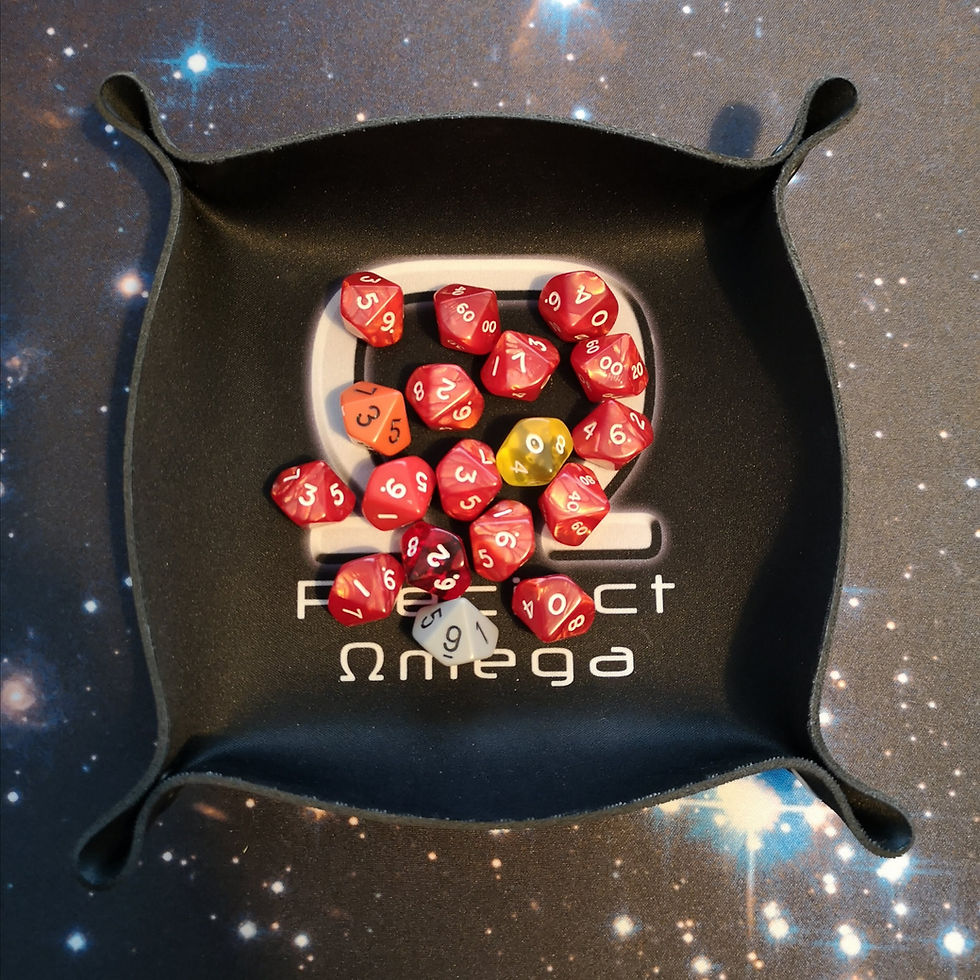#diceday - The Dynamic Duo!
- Robey
- Mar 29, 2021
- 3 min read

Last week, I wrote about how much I dislike the d10, so this week I need to return to that topic and explain how much I love the d100, sometimes called a "percentile dice".
Now, I should start by pointing out that I don't mean this guy.

Oh, my word, no. This abomination can stay the **** away from me. I mean the delightful combination of a pair of d10s, with one acting as the "tens" dice and one as the "units" dice. You can do this in one of two ways. You could take two different-coloured dice (like the orange and grey dice from the picture above) and nominate one (let's say grey) as tens and the other as units. So, in the roll above, we've got a 93.
If the tens dice rolls a 0, then you're rolling a 1 to 9... unless the units dice also shows a 0, and then you're rolled a perfect 100.
The other way you can do it is to have an actual tens dice. You can see a few of them in the picture above, showing 60, 00 and 40.
My affection for this dice (and I really consider it to be a single dice) is based on two things: first, the fact that I first encountered it properly in the Game Workshop "specialist" narrative skirmish game, Inquisitor, which was my first time really getting involved with the art an science of game design, giving the d100 a hearty dose of nostalgia to help me swallow it; second, though, was the simple delight I remember feeling when I discovered that something as unwieldy and ugly as the single-object d100 could be made so much more clear and useable with two d10s.
Mathematically, percentages are something we are taught early in school and which we continue to use daily throughout our lives. We talk about something being a fifty-fifty chance. We talking about humidity, APR, discounts, our level of enthusiasm, exam results... all in terms of percentages. It lends the d100 an intuitive quality that makes its use accessible in a way that few other dice are - even the d6.
When we have to roll 33 or less for success, we know that we're on poor odds. If it's 11 or less, we know we're looking for a miracle! If we fail on a 96 or less roll, we know its a disaster!
But there are three weaknesses to the d100. The first is that, as implied above, we generally engage with it best when we are trying to roll under a target, which is counter to how most dice work and for which high rolls are usually better. Games like D&D and Warhammer have contorted their rules for decades on the basis that people prefer to have high stats and roll high numbers. Rolling a 01 just doesn't feel as instinctively rewarding as rolling a 99, even if the former is a pass and the latter is a fail. The other weakness is that the granularity of one hundred separate possible outcomes often falls down in the game itself.
If you look at games designed around d100s, you often see increments of +/-3 or +/-5. The former essentially breaks the d100 down into a d33. The latter, into a d20. And once you get to that, you might as well just roll a d20 (where you also tend to see increments of +/-3 and, frankly, you might as well roll a d6 and just accept it).
The third weakness isn't, really, a weakness. It could be argued to be a feature rather than a bug. And that is that you can really only roll one at a time (unless you use the single-body abomination, and then you deserve everything you get).
But these are weaknesses that can be accommodated. The d100 isn't a dice for the wargaming arriviste. It's a dice for the veteran. For the connoisseur. And players like these are more adaptable to novel mechanics and less intuitive systems and, in fact, tend to crave them. So don't fear the d100, but... treat it with respect. They aren't just a partnership. They're a couple, fearless against the world.



Comments